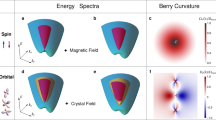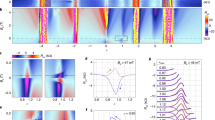Abstract
As a contribution to the history of algebraic notation it may be worth while to point out that the symbol for variation was introduced by William Emerson. In his “Doctrine of Fluxions,” third edition, London, 1768(first edition, 1749), he says on p. 4:—“To the common Algebraic Characters already received I add this”, which signifies a general Proportion; thus, A “BC/D, signifies that A is in a constant Ratio to BC/D; that is(if a, b, c, d be other Values of these Quantities) A:BC/D::a:bc/d; and thus every general Proportion is to be understood.”
This is a preview of subscription content, access via your institution
Access options
Subscribe to this journal
Receive 51 print issues and online access
$199.00 per year
only $3.90 per issue
Buy this article
- Purchase on SpringerLink
- Instant access to full article PDF
Prices may be subject to local taxes which are calculated during checkout
Similar content being viewed by others
Author information
Authors and Affiliations
Rights and permissions
About this article
Cite this article
CAJORI, F. Origin of a Mathematical Symbol for Variation. Nature 95, 562 (1915). https://doi.org/10.1038/095562a0
Issue date:
DOI: https://doi.org/10.1038/095562a0



